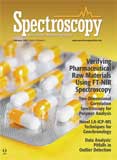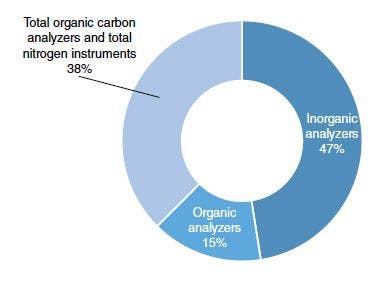Understanding Emerging Biopolymers with 2D Raman Correlation Spectroscopy
Noda discusses his work with 2D Raman correlation spectroscopy and how he applies it to the study of various materials, including exciting new biopolymers.
Two-dimensional (2D) Raman correlation spectroscopy is a powerful analytical technique for analyzing a system under the influence of an external perturbation. Isao Noda, of the Department of Materials Science and Engineering, at the University of Delaware and Danimer Scientific, has been developing 2D Raman correlation spectroscopy and applying it to the study of various materials, including exciting new biopolymers. He recently spoke to us about this work.
In a recent paper and presentation at SciX (1,2), you discussed the use of two-dimensional (2D) Raman correlation spectroscopy to study specific copolymers. How does this method differ from other methods used to study copolymers? What makes the method a good choice for this type of analysis?
Two-dimensional correlation spectroscopy is emerging as a very versatile tool to extract pertinent information from spectroscopic data obtained for a sample under the influence of some external perturbation. We rapidly chilled a molten biodegradable polyester and monitored the evolution of Raman spectra during the crystallization in both carbonyl stretching and very low frequency (terahertz) region of Raman spectra. Two-dimensional spectra are obtained in the form of planar maps defined by two independent spectral variables, like two Raman shift axes in our case, by applying a form of cross correlation to the time-dependent evolution of Raman spectra. By spreading the overlapped bands along the second dimension, the apparent spectral resolution is enhanced.
The two-dimensional Raman correlation spectra thus obtained have provided information about the relative direction of Raman intensity changes, as well as the sequential order of intensity changes during the crystallization process. Consequently, a very detailed step-by-step mechanistic description of the crystallization process is revealed involving the crystal nucleation, the growth of the primary crystals that then form the lamellar structure, and subsequent secondary crystals in the constrained space between lamellae.
Compared to the traditional analytical method focused on very specific characterization metrics, such as crystallinity or molecular chain orientation, Raman spectroscopy coupled with 2D correlation analysis provides highly integrated information based on combining a multitude of observations spread throughout the spectral regions. The technique is especially well-suited for the analysis of complex systems like semicrystalline copolymers.
Your study examined the isothermal crystallization behavior of poly[(R)-3-hydroxybutyrate-co-(R)-3-hydroxyhexanoate] (PHBHx) copolymer. Why is this particular copolymer an important target for study? What did the results of your study indicate?
PHBHx is a recently introduced biobased and totally biodegradable polymer with excellent thermomechanical properties for processing and end-use applications, anticipated favorable cost of production and near future commercial availability, and a number of very attractive and intriguing properties, such as significant piezoelectric responses. Being a very new entry to the world, very little is known about the true potential of this fascinating material. Our study, which shed important light on how this material develops its crystalline structure, provides important clues to how to improve processing conditions to fabricate articles of commercial interest using this biopolymer.
What impact do you expect this study to have on the field overall?
I think it will be big. Although both Raman spectroscopy and 2D correlation analysis have been around for some time, this powerful combination has made it possible to explore the details of practically important crystallization process of newly introduced bioplastics. The amazing result we obtained surely surpassed my expectation.
What are the next steps in your research using 2D Raman correlation spectroscopy?
For the immediate future, we have so much to explore in the analysis of PHBHx copolymer systems, like blends with other polymers, the influence of additives, and exploring the effect of processing and other manipulations to control the morphology and crystal polymorphs to name a few. We certainly will start exploring systems other than bioplastics and encourage other colleagues in the field to try experimenting with 2D Raman correlation spectroscopy.
References
(1) I. Noda, A. Roy, J. Carriere, B.J. Sobieski, D.B. Chase, and J.F. Rabolt, Appl. Spectrosc. 71(7), 1427–1431 (2017).
(2) I. Noda, A. Roy, J. Carrier, B.J. Sobieski, D.B. Chase, and J.F. Rabolt, "Two-Dimensional Low-Frequency Raman Correlation Spectroscopy Study of Bioplastics," presented at SciX 2017, Reno, Nevada.

Best of the Week: Exclusive on Flow Imaging Microscopy, Interview with PNNL Chief Science Officer
April 4th 2025Top articles published this week include several interviews with key opinion leaders on various topics including advanced mass spectrometry (MS) technologies in studying diseases, microplastic detection, and interpreting Raman spectra.
New Multi-Spectroscopic System Enhances Cultural Heritage Analysis
April 2nd 2025A new study published in Talanta introduces SYSPECTRAL, a portable multi-spectroscopic system that can conduct non-invasive, in situ chemical analysis of cultural heritage materials by integrating LIBS, LIF, Raman, and reflectance spectroscopy into a single compact device.











